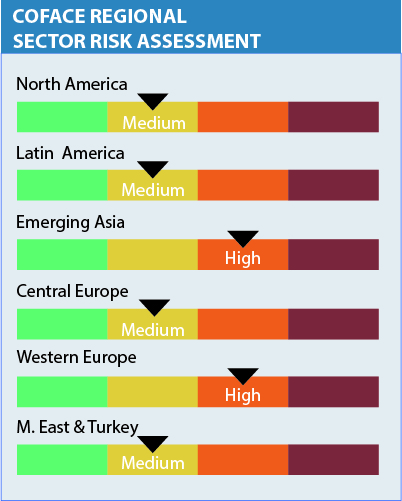Overview
Paper production grew in 2017, although the global picture is patchy. The rise is mainly due to increased household consumption of sanitary paper, as hygiene habits change around the world, and to the growing use of cardboard packaging driven by e-commerce. This offsets the rapid decline in traditional uses of paper, such as newspapers, driven by the advent of digital technology and media.

Strengths and weaknesses
Paper is the world’s most recycled material, and this is perhaps its biggest strength for the future. The pressure to use recyclables can only increase. In particular paper products can provide sustainable alternatives to plastics. In 2018 Coface analysts predict that paper production will increase in Europe, but fall in the USA. In Germany, which is Europe’s biggest market, demand for industrial packaging will be particularly strong. Overall, traditional pulp production will continue to fall, with mills closing, whereas paper tissue and paper packaging production are on the rise.
When dealing with an industry that is such a mix of thriving and declining businesses, there’s a clear argument for protecting your own bottom line. World-leading credit insurance from Coface comes with built-in business intelligence: two essentials in this increasingly uncertain world.
Related resources
One unpaid bill?
Who gets paid first when a company goes bust? When a company goes into administration or liquidation, its remaining assets are sold to clear as many of its obligations as possible.
25 March, 2021
Trade Credit Insurance Explained – with working examples
Credit insurance protects you against bad debt. So if the worse happens, you still get paid.
18 March, 2021
The paradox of corporate insolvencies in Europe: miracle and mirage
The economic crisis caused by the COVID-19 pandemic heralded major business failures and insolvencies in France, and across the eurozone as a whole.. But, in 2020, and even if the real impact of the COVID-19 crisis remains
17 March, 2021